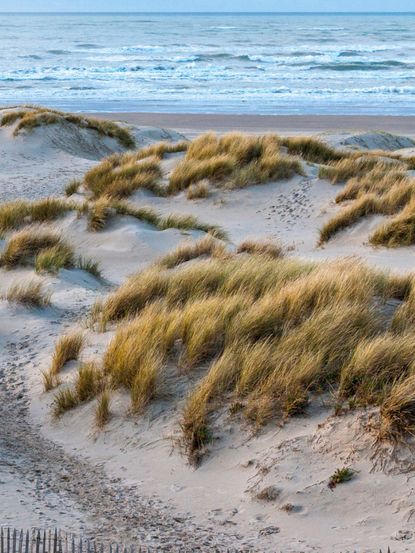Reducing Soil Erosion: Using Plants For Erosion Control


Urban building, natural forces, and heavy traffic can wreak havoc on the landscape, causing erosion and loss of topsoil. Reducing soil erosion is important to preserve nutrient-rich soils and the natural or unnatural configuration of the topography. Using plants for erosion control is an excellent biological method to safeguard the landscape and the shape of the land. There are many types of erosion control plants, but preventing erosion with native plants complements and accents the natural landscape. Native plants also need less specialized care and maintenance.
Reducing Soil Erosion
Conditions that promote soil erosion are rain, wind, physical disturbance, and overuse. Overworked soils have few large plant species to help hold soil in place and have diminished nutrient resources. That dusty, lifeless soil is prone to blowing or leaching away, leaving exposed areas that become rife with weeds and unwanted species. Preventing erosion with native plants is a common ecological practice in land management. It is a relatively easy way to conserve topsoils and prevent open areas from wearing away. Other methods include coir netting, mulching, terracing, and wind or water breaks.
Erosion Control Plants
Cover crops, such as vetch, rye, and clover, are excellent plants for erosion control. These hardy, easy-to-grow plants send out nets of roots that help hold topsoil in place while also reducing competitive weeds. When tilled back into the soil, they increase the nutrient density as they compost. Other types of erosion control plants might include ground covers. Examples of ornamental erosion control are:
Even smaller plants like wooly thyme and baby tears are helpful in preventing weeds in overworked soils and protect the topsoil, allowing it to recover nutrients and tilth.
Grasses for Soil Erosion
Native grass plants are useful for erosion control and have the added benefit of fitting readily into the landscape. They will easily transplant and take in conditions that mimic their natural habitat. Native grasses also need less maintenance as they are adapted to the region in which they occur and receive most of their needs in the existing site. The right grasses for soil erosion depend upon your zone and region. Overall, some excellent choices are:
In arid regions, buffalo grass, deer grass, and native bunchgrasses are useful for erosion control. You can also simply use a turf grass appropriate for your zone. Consider whether you need a cool or warm-season variety. Sow seeds in early spring and keep the area moderately damp until germination. Establishment after germination is rapid with the proper seed choice for your soil, average moisture and temperature, and plant hardiness zone.
Gardening tips, videos, info and more delivered right to your inbox!
Sign up for the Gardening Know How newsletter today and receive a free download of our most popular eBook "How to Grow Delicious Tomatoes."

Bonnie Grant is a professional landscaper with a Certification in Urban Gardening. She has been gardening and writing for 15 years. A former professional chef, she has a passion for edible landscaping.
-
 Grow a Bathroom Oasis: 8 Best Bathroom Plants With No Light or Low Light
Grow a Bathroom Oasis: 8 Best Bathroom Plants With No Light or Low LightSome apartment dwellers grow the best bathroom plants with no light or low light. Read how one of our favorite plant lovers does it in the big city.
By Teo Spengler
-
 "My Worst Mistake" – Gardeners Share 10 Hard-Learned Lessons
"My Worst Mistake" – Gardeners Share 10 Hard-Learned LessonsGardeners never stop learning, and sometimes our mistakes are the best teachers. But why not save time and heartache by learning from other gardeners' failures?
By Melanie Griffiths